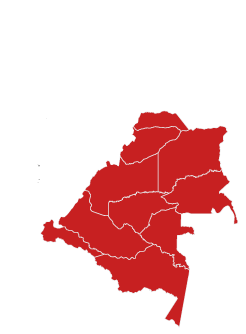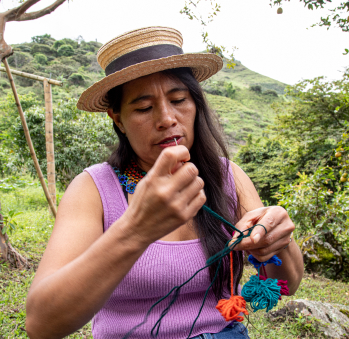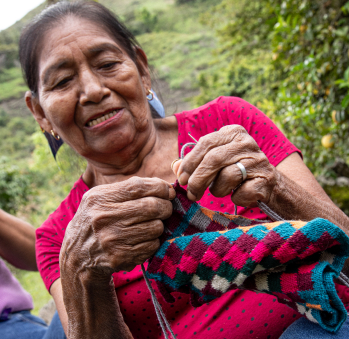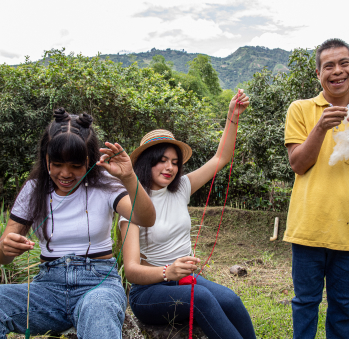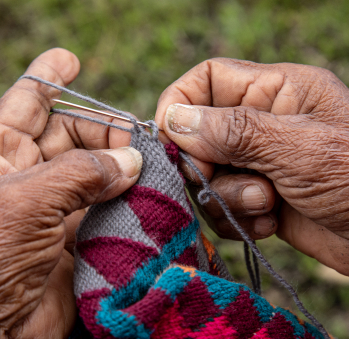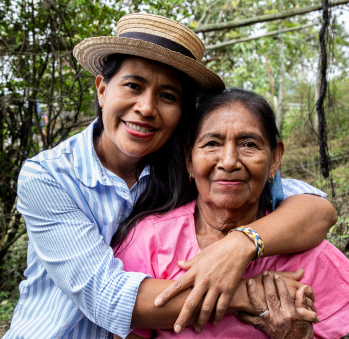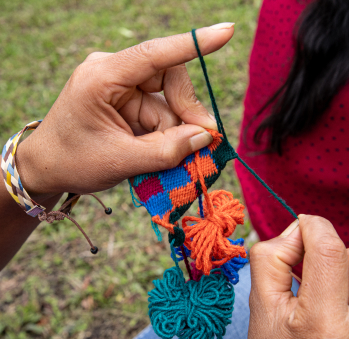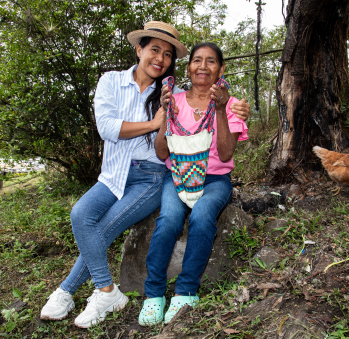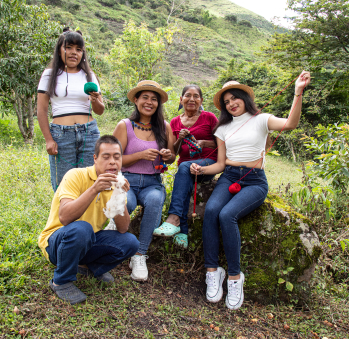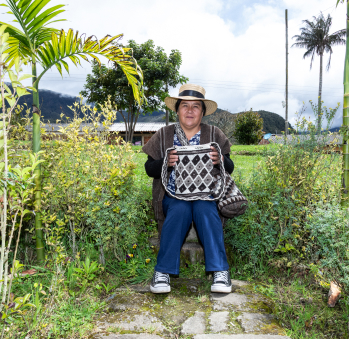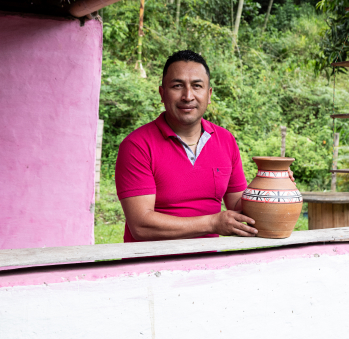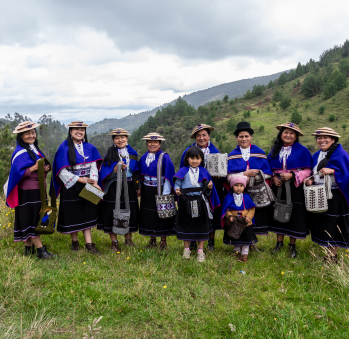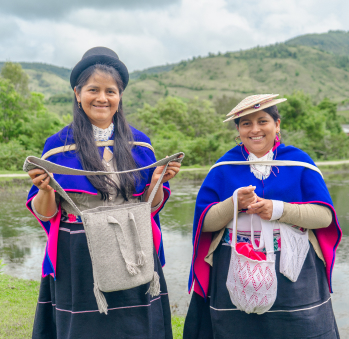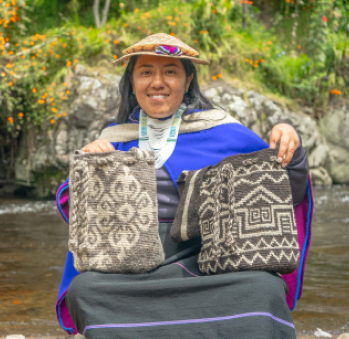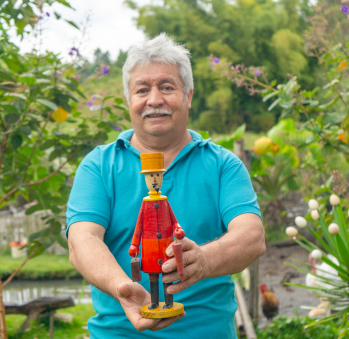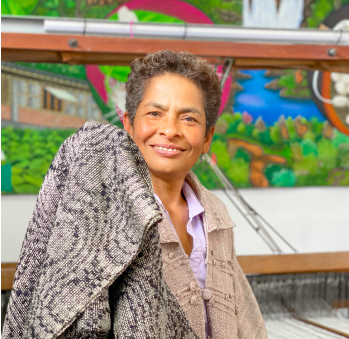Rosalba Pancho y Jeni Mildred Angel Pancho
Workshop: Líneas de cuetanderas nasas
Craft: Weaving
Trail: Popayán-Páez Route
Location: Inzá, Cauca
SCHEDULE YOUR VISIT
Resguardo indigena de Santa Rosa, Vereda Quiguanás, a kilómetro y medio del Crucero (Parque arqueológico)
3106431024
angelmildred01@gmail.com
@yenimildred.angelpancho.1
It is Mildred who speaks, and she begins by saying that her mother, Rosalba, is the true weaver in this story—but one who prefers to stay in the background, threading quietly with her hands rather than her words. “I’m the one in charge of speaking and advocating for her,” she says quickly, unable to hide the pride she feels in having been entrusted with such a mission. Though she learned the art of weaving from her mother—because every Nasa girl carries it in her blood—she doesn’t dare compare herself to her mother’s skill. Instead, she devotes herself to telling Rosalba’s story, and to honoring what it means to inherit this cultural legacy.
She speaks of the family project they have embraced as a way of preserving their roots—what she calls a “family enterprise.” Indeed, in the Ángel Pancho family, they have specialized in weaving the cuetandera, the iconic Nasa mochila, woven with the diamond-patterned flag that symbolizes the identity of this Indigenous community from Cauca. Rosalba learned to weave it using the natural colors of sheep’s wool—black, brown, gray, and white—but somehow, without ever fully understanding how or why, she had an instinctive gift for combining colors. To her, the palette before her eyes was as vast as the earth itself. So she began to investigate, discovering in roots and leaves the colors she wanted to weave: vibrant greens and countless yellows, coffee husk for the browns and terracottas. Of course, modern demands and market preferences eventually led them to experiment with synthetic yarns. But they’re careful—their pieces should never look garish. Rosalba blends these colors as if composing a landscape, and she taught her children to do so.
These women are a living embodiment of the OVOP philosophy—One Village, One Product—a strategy born in Japan that encourages communities to identify and take pride in products that reflect their heritage and can foster meaningful, fair trade. This is exactly what the cuetandera has done for the Nasa people.
And it’s not just about the stitchwork, rich in symbolism, but about valuing the entire process—starting with the preparation of the raw material itself. The sheep’s wool is sheared under a jecha moon phase, then carefully cleaned and laid under the dew overnight so it becomes softer and more pliable. To spin it, the wool must be wound evenly around a small stick, tucked under the arm, and stretched gently to produce perfect thread. The spinning of the wool is an art itself, and it must be done masterfully in order to obtain a perfect mochila.
Mildred is certain: “These stories must be told so they may continue to exist and endure.” And so she tells not only how the mochila is woven, or what each symbol represents—many of which echo the designs carved into the hypogea of the Tierradentro archaeological park—but also what the cuetandera was originally used for. Traditionally, it was carried by spiritual healers to hold mambe, coca leaves, tobacco, and chirrinche—a potent distillate made from over a hundred medicinal plants. These were not just tools for healing, but spiritual mediators, used to protect the home and restore balance.
They know they have much to share and show in their town of Inzá, where a visit through their reservation offers the chance to witness the creation of a mochila that is not just a bag—it is their entire world. A living body, carried close. Its strap is the umbilical cord, and its pouch holds the womb of life.
Craft
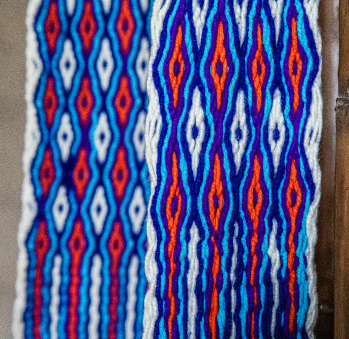
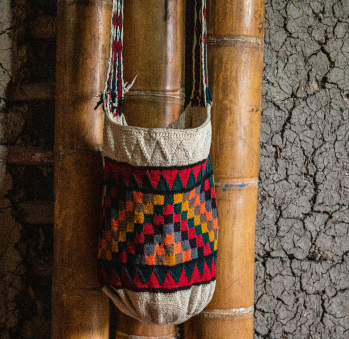

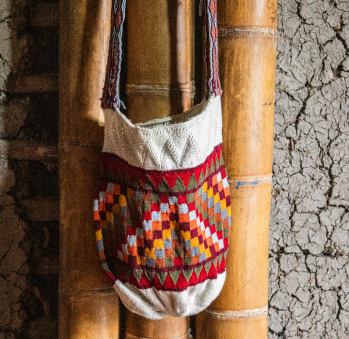
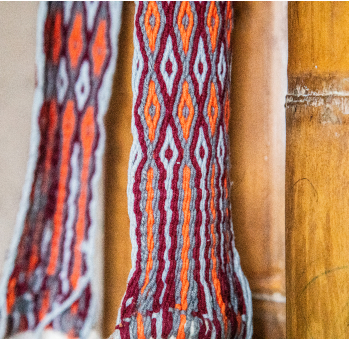
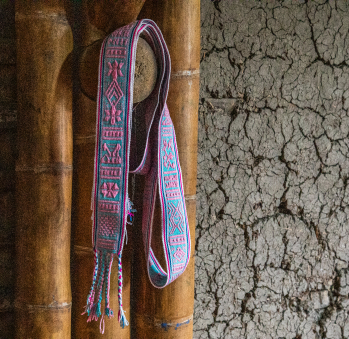
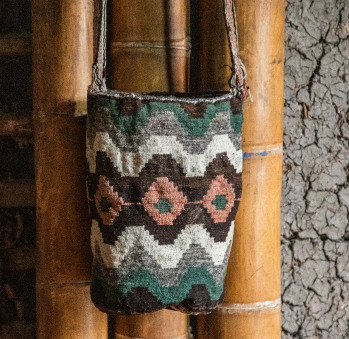











Artisans along the way
Artisans along the way
No puede copiar contenido de esta página

